If you’re not automating your finishing you’re one of a swiftly decreasing number - at least according to the manufacturers/suppliers of the kit and ‘solutions’ they want to sell you. Here’s an update on their latest offerings to the large-format psp.
Looking ahead, where do you think the biggest technological developments are taking place - or need to - in terms of finishing within large-format digital print, and when do you expect the market to see the fruits of R&D in those areas? That was the question put to manufacturers and suppliers of finishing kit for this feature. To précis the response: ‘automation’ and ‘now’.
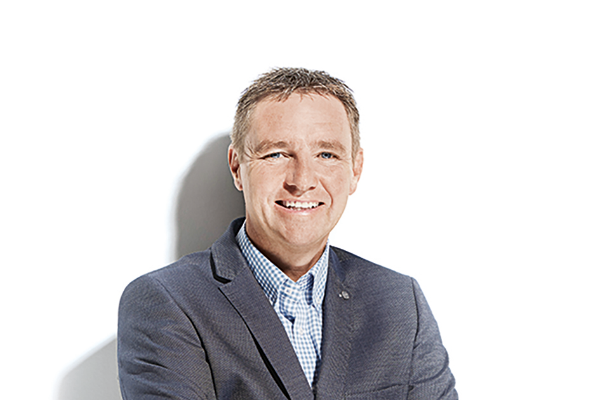
Lars Bendixen, segment manager graphics at Zund provides a more detailed overview, saying: “In general, the ability to print on an ever increasing number of materials, and the creativity that allows print companies in terms of the applications they can deliver, means that everyone wants more flexible, faster, more efficient finishing solutions. Having more automated tooling for instance, is an area of focus. As is making sure to have not just print ready, but cut ready files.
You know that when someone looks at a new printer the first thing they ask is how fast does it go? It’s the same with finishing kit, but they need to think about efficiencies not just speed. We have very close relationships with Rip vendors to ensure we can make our finishing solutions as efficient overall as possible.
“In terms of robotics, it’s fair comment that many PSPs in LF graphics don’t see the ROI making sense at the moment, but that will change. People want to reduce manual labour so it will happen. Robotics have traditionally been good for repeat jobs, but they have developed and there are robotic solutions for ‘bespoke’ types of short-run environments. It’s now more of a mindset than technical issue, and in three-four years I think we’ll see a change in how the market accepts it.”
Bendixen continues: “There isn’t one specific ‘gap’ when it comes to technological development requirements for finishing in the large-format print space - all areas can be improved. However, there are some focus points. Developing better finishing solutions for fabric applications is one. Fabric print is a big trend and we are having to continually adapt handling tools to meet requirements.”
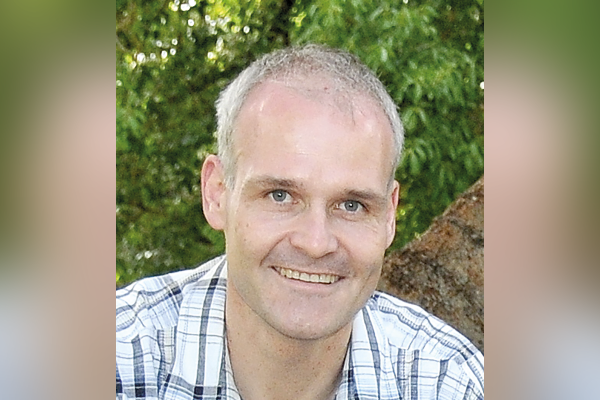
Geert De Proost, director solutions marketing at Esko, picks up automation theme: “Full automation is where all industries are heading. Esko continues to support the sign and display and corrugated sectors with integrated hardware and software solutions that are designed to help wide-format print shops implement automation software quickly and efficiently.”
“As many print businesses now look to automate previously manual aspects of print finishing or need to have much greater throughput to cope with the output of print from new print workflows means we expect to see more features built in as standard [on finishing kit] and to have greater productive growth within a single device to ensure the hardware investment keeps pace with a printer’s business,” adds John Draycott of Summa UK distributor ArtSystems,
“I have noticed that year on year it is becoming more important for companies to automate and reduce labour wherever possible. This is basically what the machines I sell offer, with many having robotic features replacing human hands,” says Neil Thayer of Finishline Machinery, UK sales agent for Bickers and Lamina.
The message overall for finishing solution development is exactly what we’ve come to expect – that though there’ll always be something of a focus on actual machine speed and kit offering more flexible tooling and handling capabilities, there’s also real R&D focus on better network connectivity, workflow integration, remote diagnostics and job analytics.
Think Smart
As a large-format PSP you have probably read much about the gains to be made from having an automated shape nesting application, but it’s possible you haven’t considered how a dedicated, integrated solution can deliver benefits throughout the production chain right through to finishing and distribution. Well, Sagen de Jonge, CEO of Tilia Labs, outlines why it would be a good idea to do so.
“OK, so you’re not going to buy new kit without first ensuring it will integrate into your overall production reasonably easily. And most large-format printers come bundled with their own automated nesting software that should interface with common production protocols without too many headaches. If good enough is all you want, then job done. But if you are wanting to minimise costs to maximise return, you might want to ask yourself a few questions. For instance, is your nesting totally automated? Are you fully utilising all your equipment? Are you creating overly complex workflows to get around software limitations? Are you using multiple imposition solutions to handle different work? Do you know what your material waste is?
“The software included with equipment is going to be optimised for that one device but by adopting a dedicated system that automates imposition and nesting throughout the entire production process you can make startling gains.
“Just think about your cutting operation. Does someone have to physically move boards to the table, load the cutting data onto the device, and perform a registration step? What about sorting, gathering and packing? Once pieces are cut out, where do they go? Are different pieces of an order spread out across the layout or on a separate layout? Do you use a different programme to help the cutter or router work out how to stack pieces?
“A dynamic workflow with a dedicated imposition system can help identify and organise the final cut product. Using integrated imposition - such as tilia Phoenix - orders can be grouped by due date, delivery region, or any number of different parameters so that they end up on the same layout to cut down on collection time. Dynamic barcodes or text marks can be added to orientate pieces ideally and to sort pieces for stacking. Auto-generated PDF-based reports can help operators visually identify pieces, while auto-generated XML-based reports feed back into MIS system to help track which layouts featured each individual piece or order.
“Last-minute artwork amendments, changes to specifications and equipment malfunctions are, unfortunately, a daily occurrence. When they happen, do you need a prepress specialist to re-configure your layouts or re-direct the jobs to an alternative printer or finishing device? Wouldn’t it be great if any member of staff could just log onto your MIS or workflow management system to make the order changes, safe in the knowledge that the print job has been automatically updated, re-imposed and optimised to suit the substitution?
“Some of these scenarios might seem a long way from your current production needs, but If you’re looking to grow your business without investing in complex workflow integration, solution like tilia Griffin are great way to start.
“Repetitive and difficult tasks such as nesting, tiling, registration and grommet marks can be accomplished quickly and with little training - not only cutting down on material costs but enabling you to increase your throughput without increasing headcount. All that and you have a solution optimised for further automation whatever you decide for your set-up in years to come.”
A look at the latest offerings
Here’s a quick reference guide to the newest finishing solutions - all introduced into the UK since last summer.
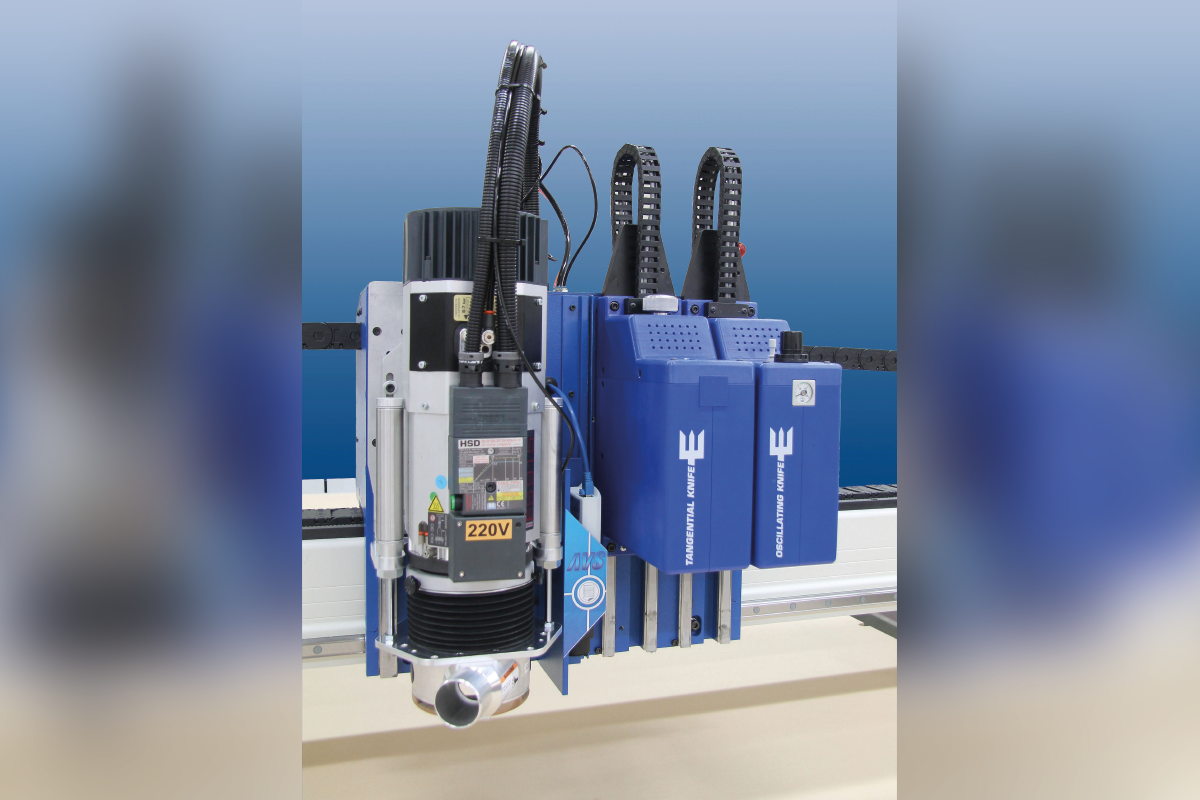
AXYZ International
Trident router/cutter
A number of upgrades have recently been incorporated into the hybrid Trident router/cutter. These include a redesigned processing head that is said to be much simpler to operate and easier to service, and improvements to the oscillating and tangential knife-cutting units that provide higher routing/ cutting speeds and the ability to handle a much wider range of materials.
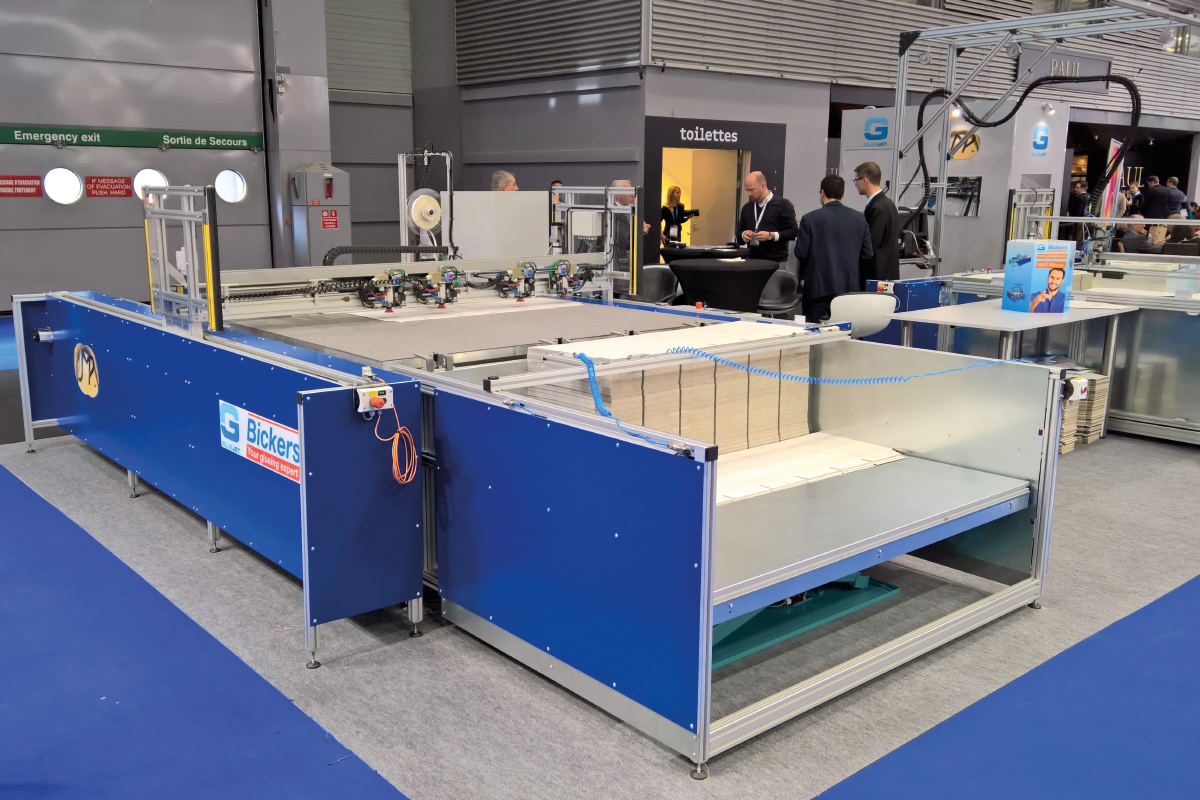
Bickers
XY Tapejet
Launched at Fespa 2018, this German-made machine is available in the UK from Finishline Machinery. It automatically picks and places sheets with camera controlled precise positioning. Tape is applied automatically in any angle direction. The largest standard size is 2100 x 1600mm - other sizes are available on request.
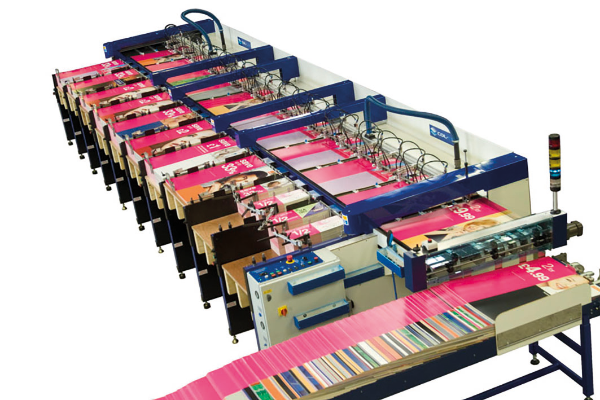
Col-Tec
Smart Poster Collator
This machine, introduced into UK last year, can deliver collated sets on demand, meaning that no two sets need necessarily be the same - they can be store or client specific. It can handle a maximum format of 62 x 42in at a top speed of 1,500 sets per hour. Prices start at £100,000.
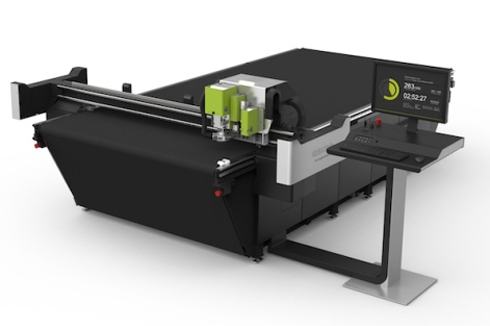
Esko
Flip-Side Camera for Kongsberg
You should be able to get your hands on the new FlipSide Camera for Kongsberg cutting tables equipped with a feeder and from Q4 2018, but you need to look at forking out £18,000 for it. The solution promises to save the 20 to 30 minutes of manual set-up time typically required to ensure accurate cutting of corrugated board for in-store displays etc.
When using the Kongsberg Feeder and Stacker, the camera scans the underside of the sheet to locate registration marks, barcodes containing set-up instructions, and the corner of the sheet. It is then able to cut and crease accurately by calculating where the registration marks are in reference to the corner, with limited or no operator intervention.
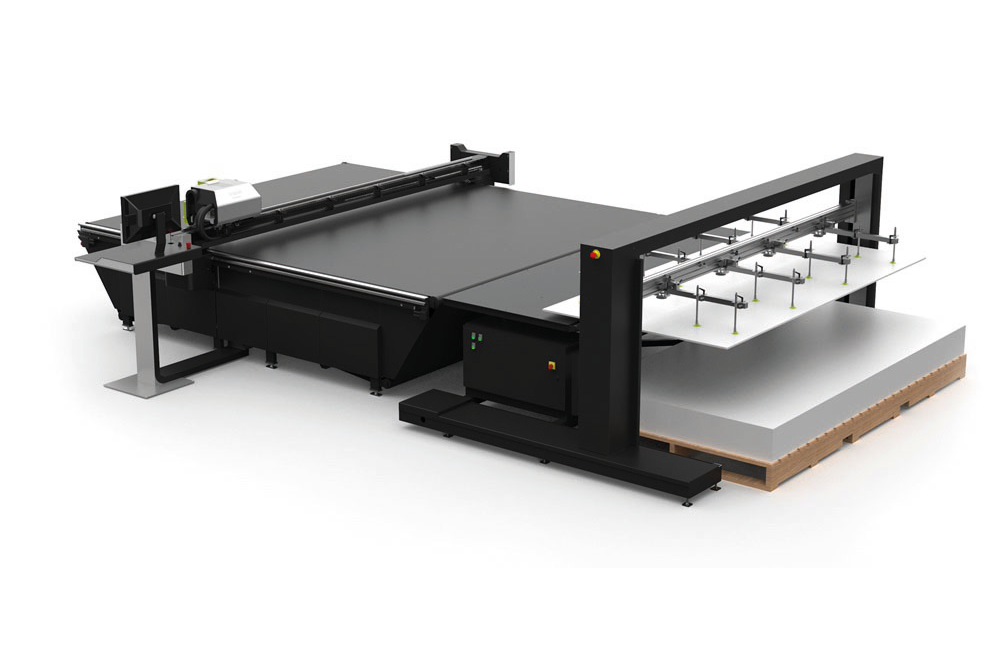
Feeder and Stacker for C64 Kongsberg
This is a modular solution, with the i-BF60 (feeder) costing from £55,000, and the i-MS60 (stacker) from £68,000.
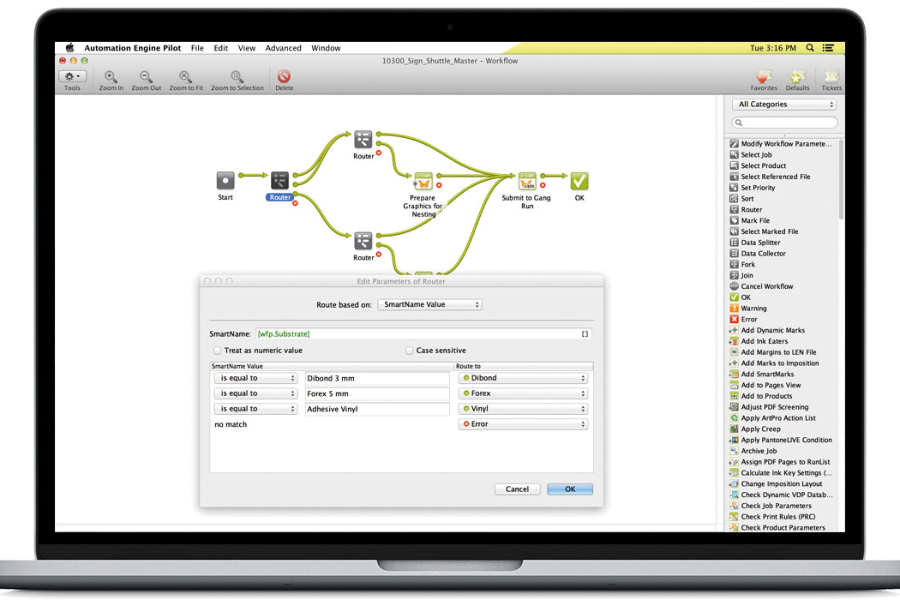
Automation Engine QuickStart for Sign
Released in March, this package - which directly links to Kongsberg cutting tables - comes preloaded with workflows for sign and large-format production, with Esko promising that in five days you will be up and running with an automated system that handles tasks like preflighting, PDF optimisation, cut path and bleed creation, tiling and nesting - as well as producing reports. It costs £29,000 implemented.
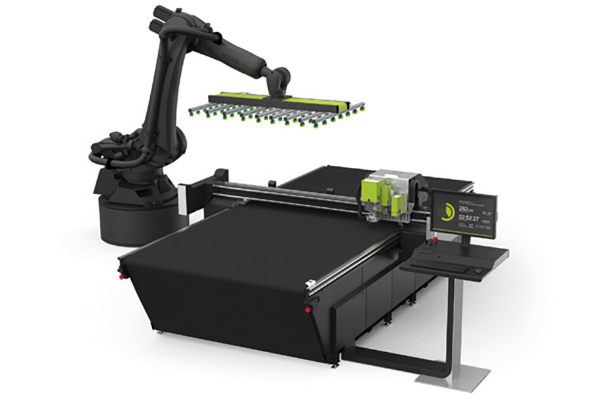
Robotic System for C66 Kongsberg
Released April 2018, with a price tag of around £500,000 depending on configuration, this feeder/ stacker robotic system does what you’d expect - automates the task at hand!
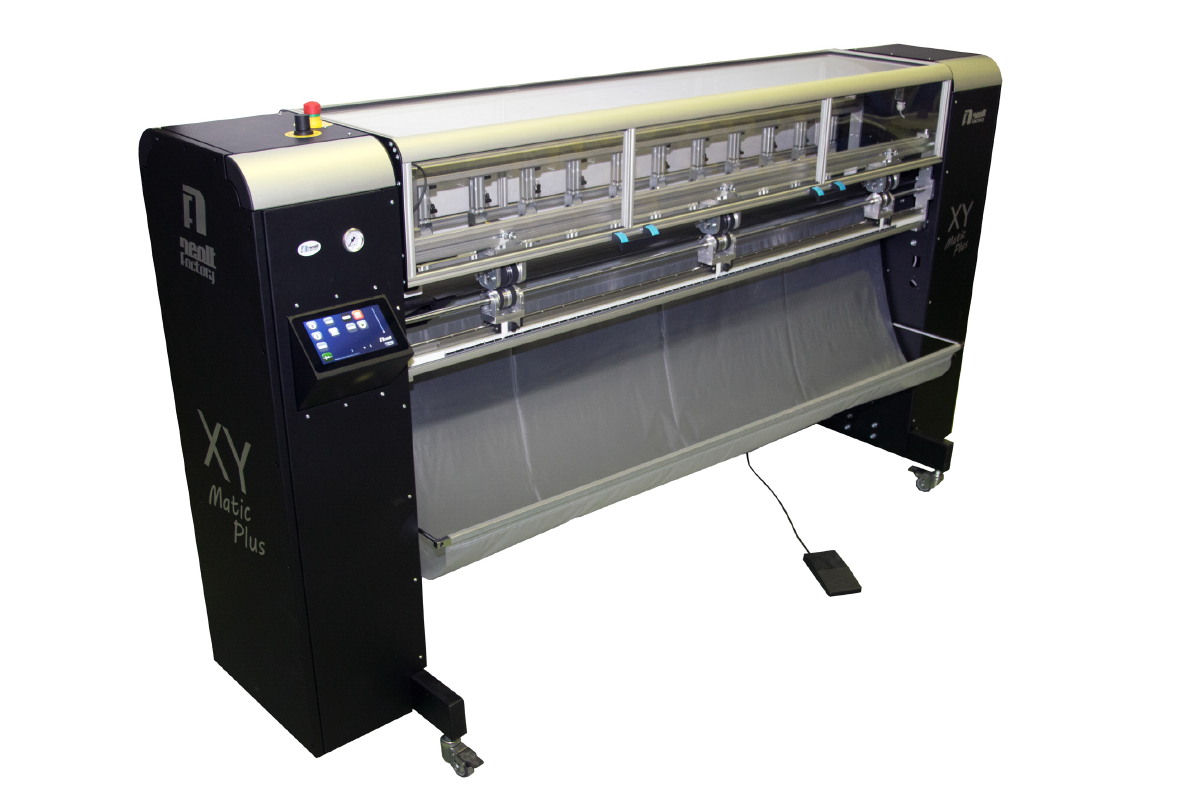
Neolt
XY Matic Plus Trimmer/ Cutter
This is Neolt’s latest offering for the large-format market, having been introduced in June 2018 by UK distributor Atlantic Tech. The system - which provides up to ten vertical cutting units - can cut four ways, is self-aligning on a cut run, and has adjustable speed and pneumatic pinch rollers. There’s a LCD touchscreen with built-in operator training video. Prices range from £9,685 to £18,250.
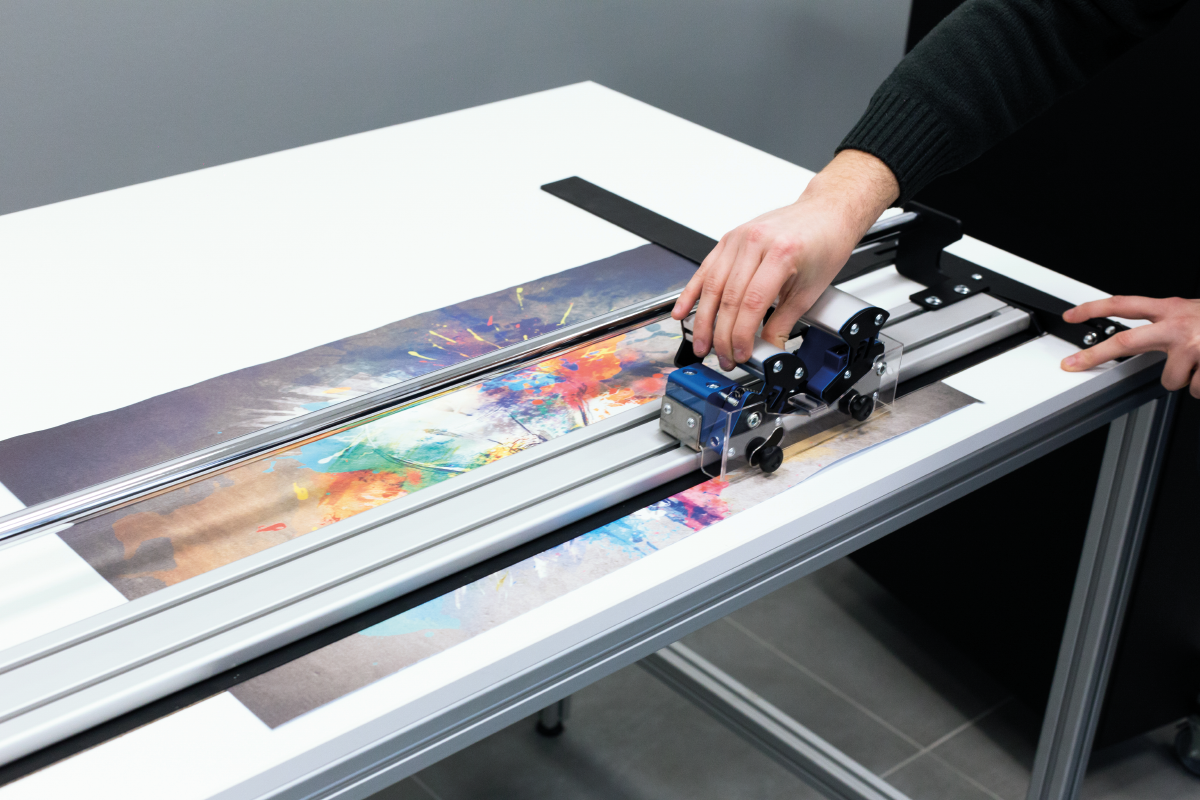
Easy Cut Manual Table-Top Cutter
Again available in the UK via Atlantic, this is a robust manual cutter available in 100/130/150/200/250 widths. The cutter, which was introduced in May this year, has two blades in 110, 165, 210 and 310 sizes and cuts media up to 10mm. Prices start at £400.
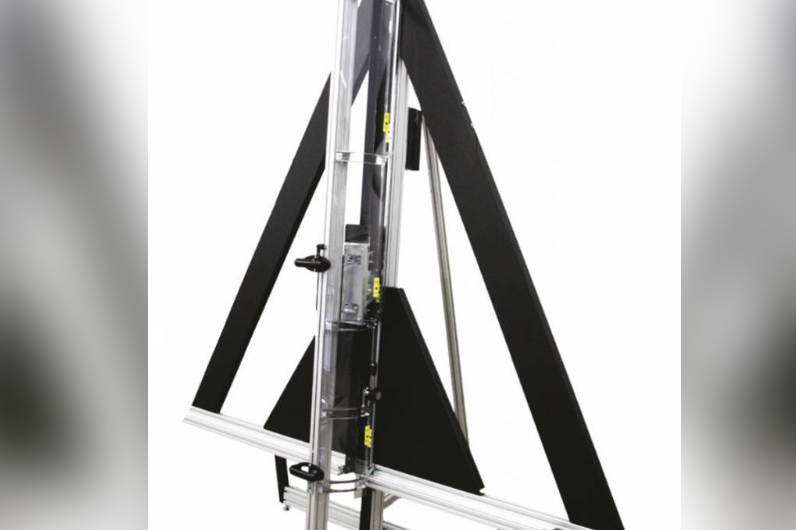
Electro Vertical Cutter
The Electro Vertical Cutter, which has been around since July 2017, has three blade options, cutting 1 - 30mm for materials including cardboard, foam, expanded polyurethane, forex, leather, Dibond, glass etc. It is available in 2,100, 2,500 and 3,100mm heights, costing from £6,576 to £10,857.
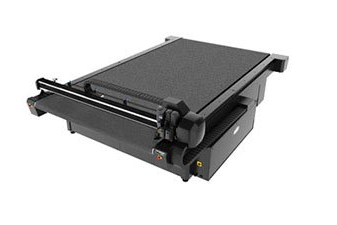
Summa
Summa F Series F1832
Launched at Fespa 2018 and now available in the UK and Ireland via distributor ArtSystems and its authorised resellers, this is a heavyweight piece of kit with a cutting area of 185cm (72in) wide x 320cm (126 in) long - up to 50m (164ft) long in multi panel. It handles media up to 190cm (75in) wide and runs at speeds up to 1,000mm/sec (39.4in/sec).
Key points of note/add-ons include: a tangential module; F Series and HF routing systems; electronic and pneumatic oscillating tools; kiss-cutting, single edge cutout, double edge cutout and heavy duty cutout tools; creasing and V-Cut tools; production software; and automated depth control left (an upgrade kit).
The UK RRP for the base model is around £100,000 excluding delivery and install.
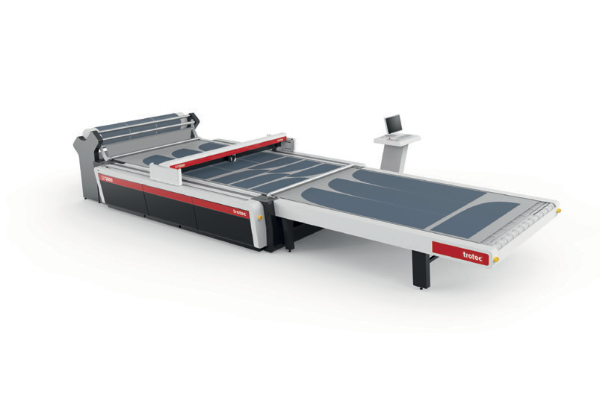
Trotec
SP4000 C
At Fespa 2018 Trotec previewed this large-format laser cutting solution for soft signage and though not yet available on the UK market it’s worth flagging up.
With a working area of 3,210 x 3,210mm and a maximum roll width of 3,210mm, the SP4000 C is a fully automated laser system for applications such as banners, flags, or lightboxes. The laser - available in 100, 200, and 400 watts - can be configured around a conveyor belt with feeder unit and unloading table, depending on the desired workflow.
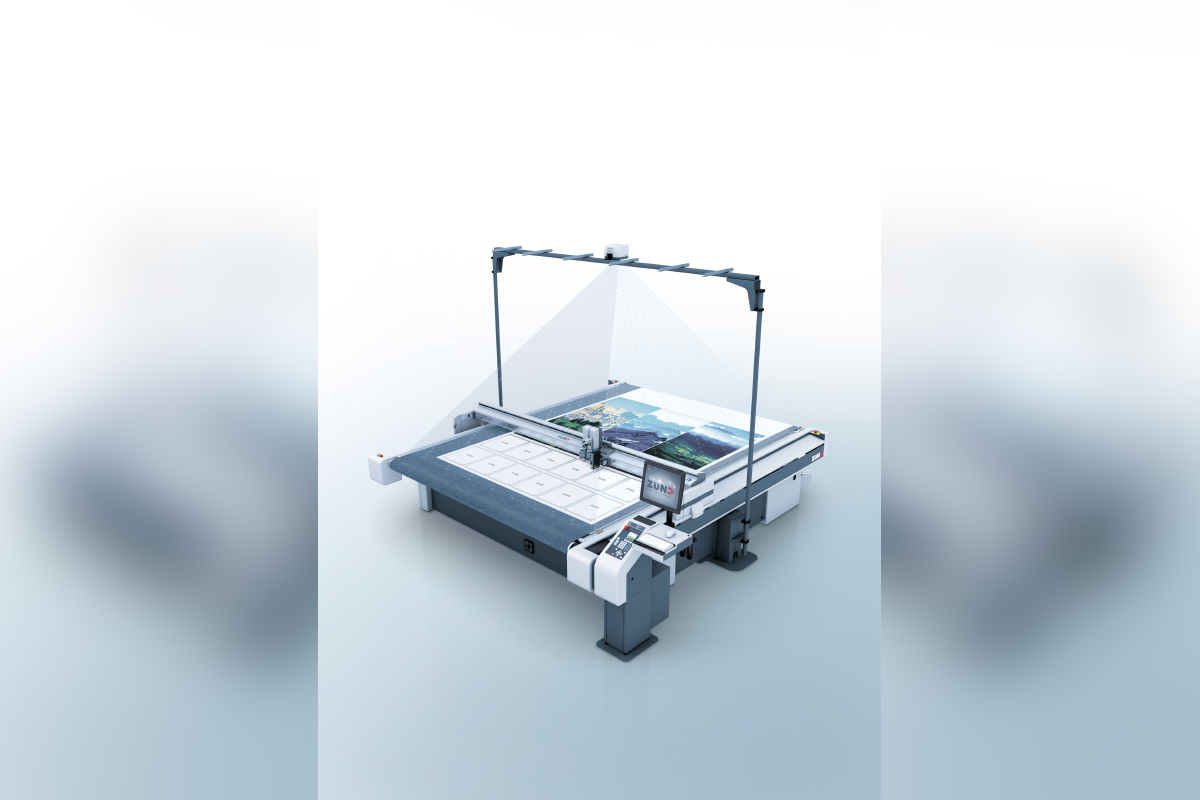
Zund
Over Cutter Camera (OCC)
In March 2018 Zund introduced this intelligent optics system for automated digital capture of registration marks. The camera is mounted above the centre of the cutter - either on a support frame or suspended from the ceiling. One-shot capture technology means the number of register marks along with their position on the cutting surface become irrelevant. Data processing functions are integrated in the ZCC software so that in seconds, algorithms analyse the data captured by the camera and simultaneously compensate for any distortions.
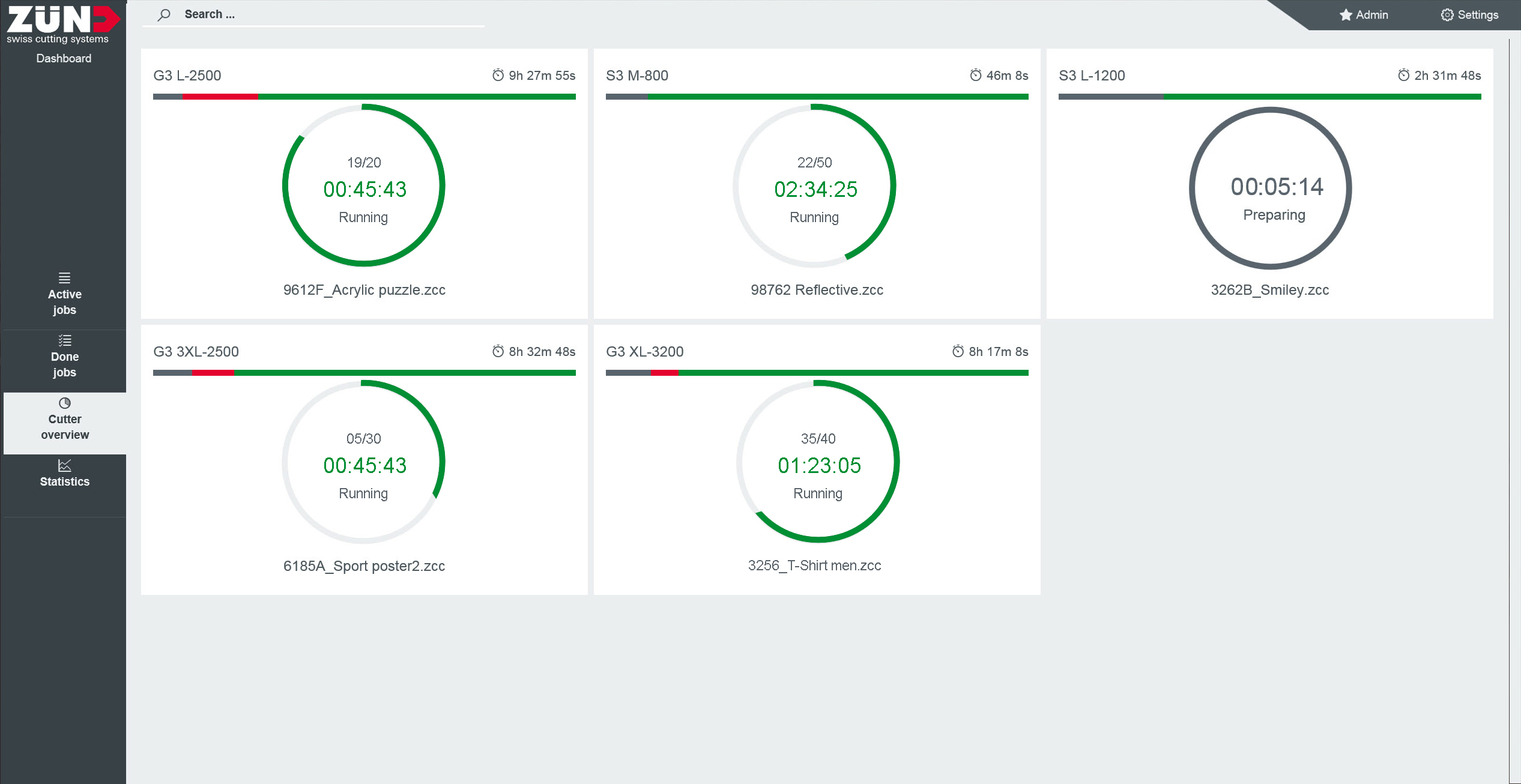
Cut Center ZCC 3.0
Cut Center ZCC 3.0 came out in December last year, bringing with it new functions. It includes refined algorithms for capturing only those register marks essential for accurately determining position, skew and distortion, thus improving productivity. Dashboard is another highlight of v.3. The browser-based function digests performance and productivity data of Zund cutters operating on the production fl oor and gives staff 24/7 remote access to that data, with real-time job status
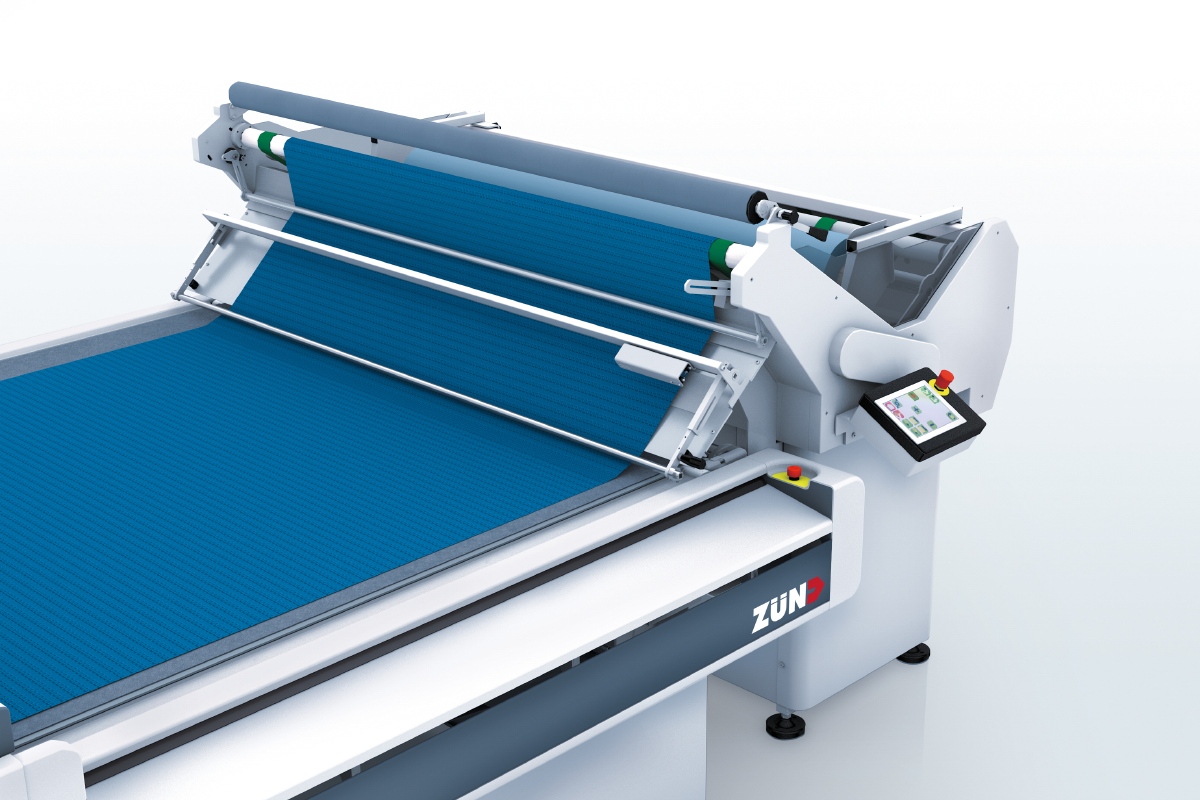
Cradle Feeder
This handling solution for rolled textiles has been on the market since summer 2017. Basically, it prevents tension and distortions when advancing stretch fabrics.
At the core of the feeder is a cradle equipped with an array of conveyor belts. For ergonomic loading, the back of the cradle tilts down. A dancer bar continually registers fluctuations in web tension and if necessary, the system automatically regulates the feed rate - which is also in synch with the cutter and further minimises tension and resulting distortions.
Intelligent edge control continually governs the positioning of the web on the cutting surface. If the sensor detects any irregularities, the cradle feeder adjusts automatically by correcting the alignment of the cradle.
The cradle feeder is suitable for both unwinding and rewinding rolls and comes in widths of 1800mm (71in), 2270mm (89in) and 3210mm (126 in).

